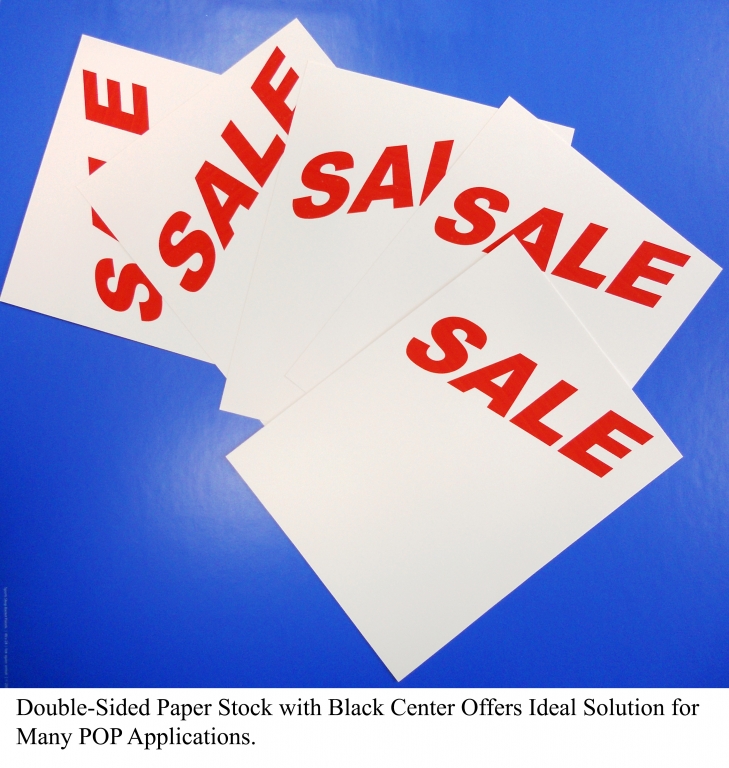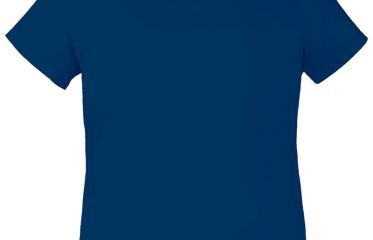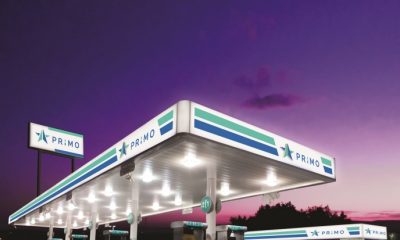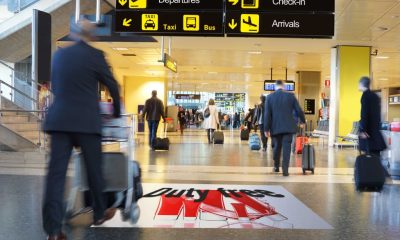Graphics Printing
Published
12 years agoon

Supermarkets, clothing store chains and other retail outlets need clear signage with messaging that’s sharply and professionally printed to draw in customers. However, signs, posters or banners that are printed on both sides of a single piece of paperboard may bleed through to either side if the proper technology is not used. The effect will be accentuated in the light of day, for example, with a storefront window sign. This poor print execution where a customer will see backwards type from the opposite side of the sign looks unprofessional and may confuse the customer because it’s difficult to read.
This is not a problem, though, if the right paper is used in the print process, whether it is done by a commercial printer or by the in-house sign department of a large corporation or major retailer, where large format digital printers that can handle this sort of job are increasingly found.
“Think of a deck of playing cards. It’s essential that players not see each other’s hand, so playing cards are printed on paper stock that has black in the middle that prevents seeing through to the other side of the card,” says Mark J. Rowell, president of Mammoth Media, a digital print house in Pembroke, Massachusetts. “There are similar solutions for banners and other POP signage that needs to be visible from two sides, with either a different or the same message on each side. If it’s in a storefront or other well-lit area, it’s even more critical that the right kind of paper stock is used.”
New types of “block-out” or “stop-light” papers are the ideal stock for retail window signage and banners. Although it is only available from select sources throughout the United States, the 100 percent opaque paper board is perfect both for large retailers that have large format digital print capabilities in house and for commercial printers.
This specialized product is created from two papers, with a black adhesive between them, laminated to create one piece. The black center makes the paper opaque, allowing for clean, double-sided, no-bleed-through printing. So viewers only see what they’re supposed to see – there’s no seeing through to the printing on the other side.
The availability of the product in sheets up to 70” as well as in rolls makes it versatile to meet Rowell’s diverse printing needs. For a project that required printing and distribution to 1,900 retail locations, Rowell says rolls were the right match for the job that required 32,000 sq. feet of paper – or about 1 ¼ miles of printing.
“As a digital provider, a client will come to me with an idea or problem, and they rely on me to come up with the right answer,” says Rowell at Mammoth. “In turn, I rely on my paper suppliers to come up with the best fit in often a quick turnaround.”
This is another benefit of working with a producer such as Lamitech, according to Rowell, who says the company can produce an order quickly at a reasonable price.
“We might call in the morning, and the product will ship that night. They’ve really adapted to develop product on demand in an increasingly faster moving digital age,” says Rowell.
Commercial printers also appreciate the value of block-out papers. Among them are SignMasters, which finds these papers tremendously flexible. The Passaic, New Jersey, full-service commercial printer creates retail signage for many well-known clothing, food and beverage, health care, sports and transportation brands. As a one-stop shop, SignMasters manages projects beginning with the artwork, then converts it to various sizes for different fixture applications (from sign holders to window displays), prints and assembles into kits for distribution to retail points around the country.
Al Raimondi, plant manager for SignMasters, says they are receiving more and more requests for opaque signs to block sunlight, fluorescent lights or other light sources. In the past, Raimondi says it was difficult to achieve opacity in a thin-paper format – earlier options included opaque styrene, but it was a thick material. But Opacity II, with its charcoal center and availability in calipers of .0085 or .011, works perfectly for double-sided print pieces on any of SignMasters’ three print processes – offset lithography, large format digital and conventional silk screen.
The lightweight, flexible paper stock helps reduce shipping expense too, an important factor as transportation costs have continued to increase. Shipping can be a significant budget item for many retailers that often must use overnight services to meet aggressive advertising and promotional campaign deadlines across multiple locations. Since the paper is flexible, it is easy for signage to be rolled and mailed in a tube, but once unrolled, it stays flat and thus hangs well.
“In the past, a 60” sign, for example, would have to ship flat, which meant more packaging; the flexibility to roll just wasn’t there,” says Raimondi. “So there are significant cost savings if you can roll material and use smaller packaging (tubes). If you have 500 stores that need signage kits and you had to ship flat – the old style – the packaging and shipping could cost more than the printing. It’s an innovative solution to business needs,” adds Raimondi.
Raimondi should know – he’s seen the industry change through several decades. Prior to joining SignMasters, he owned and operated a graphics and printing firm for more than 25 years, and comes from a long family line with ink in their blood – back as far as 16th century Italy when his ancestor, Marcantonio Raimondi, worked as an engraver and printmaker.
The opaque paper board also is recyclable, biodegradable and compostable, which is important for businesses invested in sustainable practices and the triple bottom line. Today many retailers prefer using signage created from paper rather than foam board or plastics, because it is more easily recycled.
Lamitech also offers a broad range of sheet and roll products, including virgin paperboard, cardstock, recycled chipboard, laminated materials, foils and films for commercial printers and major box and packaging companies in North America.
For more information about the difference Opacity II papers can make in printing your POP materials, call Lamitech, Inc. at (609) 860-8037 in New Jersey or visit Lamitech.com.

Subscribe

Magazine
Get the most important news
and business ideas from Screenprinting Magazine.
Most Popular
-

 Case Studies2 months ago
Case Studies2 months agoHigh-Density Inks Help Specialty Printing Take Center Stage
-

 Art, Ad, or Alchemy2 months ago
Art, Ad, or Alchemy2 months agoF&I Printing Is Everywhere!
-

 Andy MacDougall2 months ago
Andy MacDougall2 months agoFunctional and Industrial Printing is EVERYWHERE!
-

 Columns3 weeks ago
Columns3 weeks ago8 Marketing Mistakes Not to Make When Promoting Your Screen Printing Services Online
-

 Editor's Note3 weeks ago
Editor's Note3 weeks agoLivin’ the High Life
-

 Marshall Atkinson3 weeks ago
Marshall Atkinson3 weeks agoHow to Create a Winning Culture in Your Screen-Printing Business
-

 Thomas Trimingham2 months ago
Thomas Trimingham2 months ago“Magic” Marketing for Screen Printing Shops
-

 Case Studies3 weeks ago
Case Studies3 weeks agoScreen Printing for Texture and Depth






